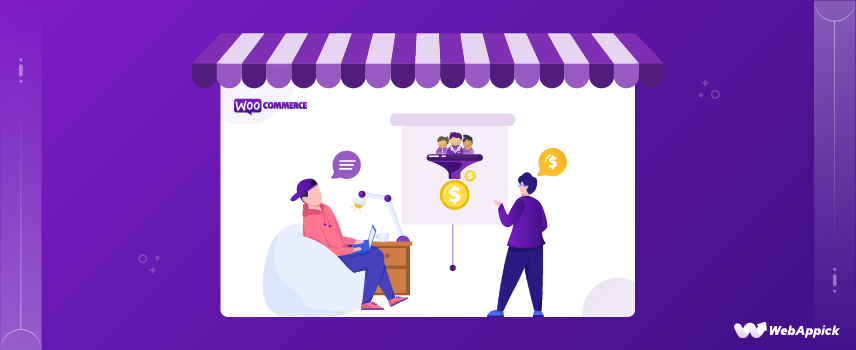
Guide to WooCommerce Conversion Rate Optimization Strategies to Boost Sales
Did you know, eCommerce sites have an average bounce rate of 20-50%?
That means nearly 50% of people leave your WooCommerce site without taking action or making any purchases.
From niche & product research to website design & development to running successful marketing campaigns, all your efforts boil down to one thing/question, are your visitors turning/converting into buyers?
All your efforts and strategies will go in vain if people don’t end up buying your products when they visit your product pages.
Today we will discuss the WooCommerce conversion rate optimization strategies you can apply to increase your sales and revenue. We will also discuss how you can use a product feed plugin called CTX Feed to reach potential customers and boost WooCommerce conversions.
But first, let’s start with the basics.

What is conversion?
In simple words, when a visitor comes to your website and takes your desired action, that is called a conversion. The desired action can be signing up for your email list, registering for your offer, or buying your product or services.
Here are some every day desired actions-
- Form submissions
- Product purchases
- Shopping cart additions
- Email subscriptions
- Social media shares
- Downloading something
For a WooCommerce store, the ultimate conversion goal is to turn a visitor into a purchasing customer.
For example, let’s say you sell plus-size clothing products for women. Let’s say, Laura, a woman from Louisiana is looking for a new plus-size bodycon dress. Your WooCommerce site offers similar products and she somehow landed on one of your product pages.
She can find your products from Google organic searches or from Google Shopping ads or one of your social media marketing campaigns. Now your ultimate goal is to convince Laura to buy your product.
If Laura spends some time on your product page and then leaves your site, then it’s called a bounce. But, if she adds your products to the cart and completes the purchase, then it’s a conversion.
What is the WooCommerce conversion rate?
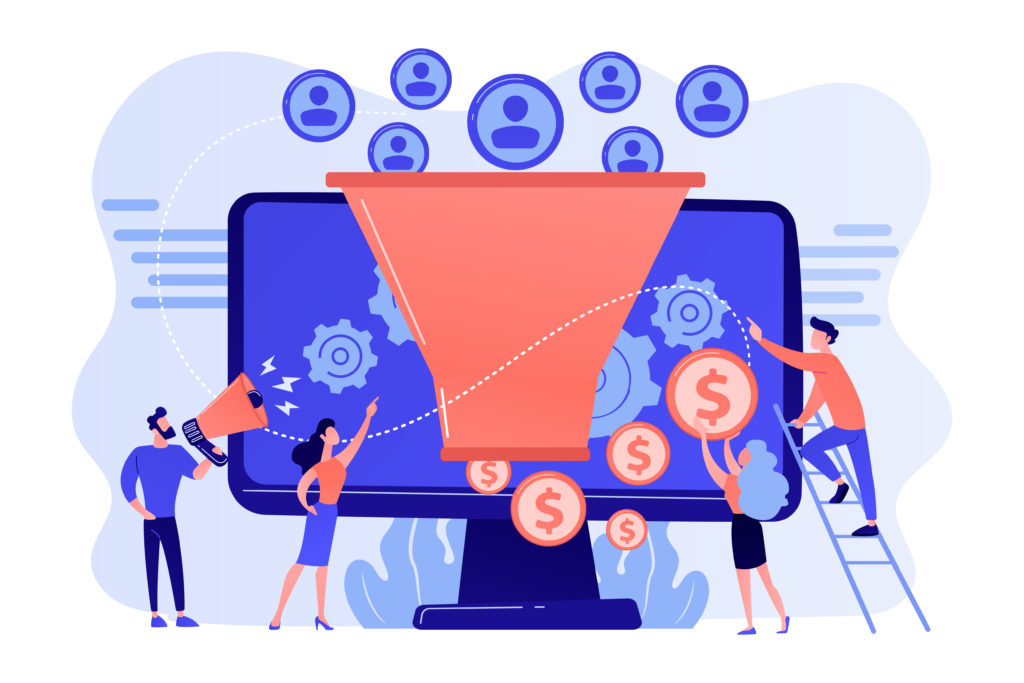
WooCommerce conversion rate refers to the percentage of visitors to a WooCommerce-based online store who make a purchase. In other words, it is the ratio of the number of completed transactions to the total number of visitors to the site.
For example, if a WooCommerce store receives 1000 visitors in a month and 50 of them make a purchase, then the conversion rate is 5% (50/1000 x 100%).
Conversion rate is an important metric for any eCommerce business as it provides insight into how effective the website is at converting visitors into paying customers.
A high conversion rate indicates that the website is engaging visitors and providing a positive user experience. While a low conversion rate may indicate issues with the website’s design, usability, or product offerings.
You can improve your online sales and revenue by tracking and optimizing conversion rates.
How to measure your conversion rate?
Measuring the conversion rate is an important step in evaluating the success of an eCommerce store. Here are the steps you can follow to measure your conversion rate:
Set up website analytics
The first step in measuring conversion rate is to set up website analytics on your eCommerce store. Google Analytics is a popular choice that provides detailed information about website visitors, including where they came from, how long they stayed on your site, and what pages they visited.
Define your conversion goals
Once you have set up website analytics, you need to define your conversion goals. This could be a completed purchase, a form submission, or any other action you want visitors to take on your website.
Track your website traffic
Once you have set up website analytics and defined your conversion goals, you need to track your website traffic to determine how many visitors are coming to your site.
Track your conversions
You also need to track your conversions to determine how many visitors are completing your desired action. For example, if your goal is to increase purchases, you need to track how many visitors are completing a purchase on your site.
Calculate your conversion rate
To calculate your conversion rate, divide the number of conversions by the total number of visitors to your site and multiply by 100. For example, if you had 500 visitors to your site and 50 of them completed a purchase, your conversion rate would be 10% (50/500 x 100%).
Analyze your results
Once you have calculated your conversion rate, you need to analyze your results to determine what is working and what is not. Look at your website analytics to identify where visitors are coming from, what pages they are visiting, and how long they are staying on your site.
Optimize your website
Based on your analysis, optimize your website to improve your conversion rate. This could include improving website design, adding new product offerings, or optimizing your checkout process to reduce cart abandonment.
Monitor your results
Finally, monitor your results over time to see how your conversion rate changes as you make changes to your website. Continue to test and optimize your website to improve your conversion rate and increase your eCommerce sales.
What Is a Good Conversion Rate for WooCommerce Sites?
A good WooCommerce store conversion rate can vary depending on several factors, such as the industry, the product type, the target audience, and the website’s traffic sources. However, as a general rule of thumb, a conversion rate of 2-3% is considered average for eCommerce websites, while a conversion rate of 4-5% or higher is considered good.
It’s important to note that conversion rates can fluctuate over time due to factors such as seasonal changes, changes in website design, changes in pricing, and changes in the competitive landscape. Therefore, it’s essential to monitor your conversion rate regularly and make adjustments to your website and marketing strategies as needed to improve your conversion rate and drive more sales.
It’s also worth noting that conversion rate is just one metric to measure the success of your WooCommerce site. Other important metrics to consider include average order value, customer lifetime value, and customer retention rate.
By analyzing these metrics together, you can gain a better understanding of the overall health of your eCommerce business and make data-driven decisions to improve your results.
What is conversion rate optimization?
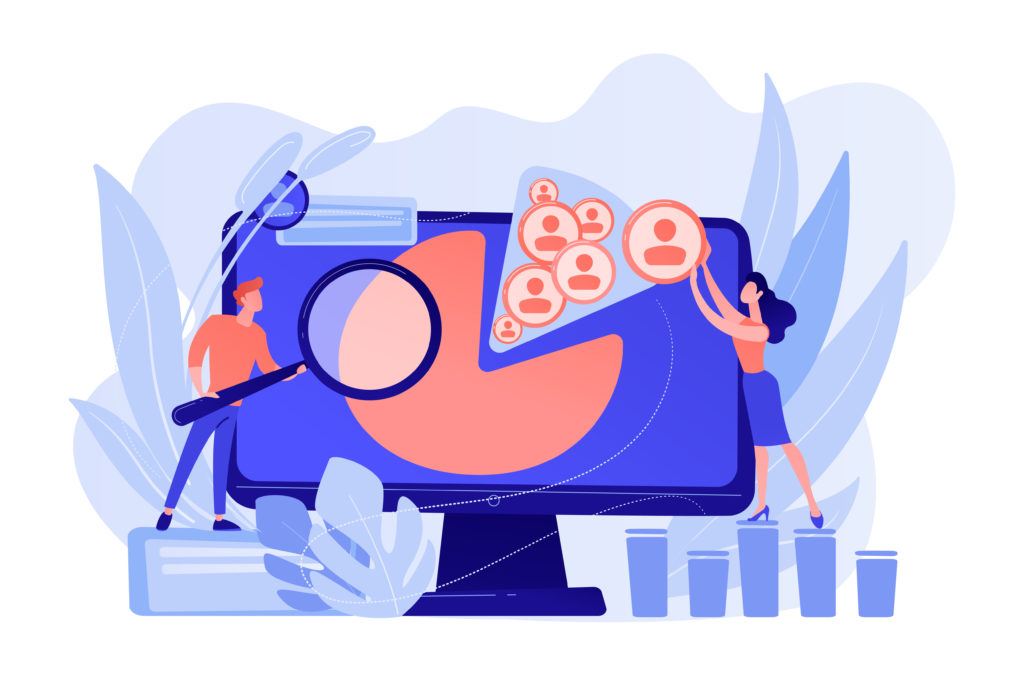
WooCommerce conversion rate optimization involves the practices to increase the percentage of conversion rate. In the simplest words, in conversion rate optimization (CRO) you apply some methods or techniques to engage your visitors and turn them into buying customers.
By optimizing your WooCommerce site for conversion, you can increase the likelihood that visitors will take the desired action, resulting in increased sales and revenue. WooCommerce conversion rate optimization is an ongoing process that requires continuous monitoring, testing, and optimization to ensure that your website is always performing at its best.

Benefits of WooCommerce conversions rate optimization
Here are some of the benefits of conversion rate optimization for WooCommerce.
Increased sales and revenue
By optimizing your WooCommerce site for conversion, you can increase the likelihood that visitors will make a purchase, resulting in increased sales and revenue. This is especially important if you have a high volume of traffic, but a low conversion rate.
By improving your conversion rate, you can capitalize on the existing traffic and increase your revenue without having to spend more on marketing.
Improved user experience
A well-optimized WooCommerce site will provide a seamless and intuitive user experience for your visitors. This can lead to increased customer satisfaction, higher engagement, and better brand loyalty.
By providing a positive experience for your visitors, you can establish a strong relationship with them and increase the likelihood that they will return to your site in the future.
Better ROI on marketing efforts
When you optimize your WooCommerce site for conversion, you can get more value out of your marketing efforts. By driving more sales from the same amount of traffic, you can increase your return on investment (ROI) and get more out of your marketing budget.
This can be especially important if you’re operating on a tight budget or competing in a highly competitive market.
Increased customer trust and credibility
A well-designed and optimized WooCommerce site can help increase customer trust and credibility. By providing a professional and trustworthy online presence, you can make a positive impression on your visitors and increase the likelihood that they will make a purchase.
This is especially important for new or small businesses that may not have an established brand reputation.
A better understanding of customer behavior
As you optimize your WooCommerce site for conversion, you’ll also gain a better understanding of your customer’s behavior. Analyzing website analytics and conducting user testing can help identify areas where customers drop off in the conversion process.
By addressing these issues based on the findings, you can make improvements to increase conversions. This can help you create a more personalized and effective customer experience, which can drive more sales and improve customer loyalty.
Competitive advantage
By optimizing your WooCommerce site for conversion, you can gain a competitive advantage over other eCommerce businesses in your industry. By providing a better user experience and driving more sales, you can stand out from the competition and attract more customers.
In highly competitive markets, even a slight increase in conversion rate can have a major impact on your financial success, so this is of paramount importance.
Lower customer acquisition costs
When you improve your conversion rate, you can lower your customer acquisition costs by getting more value out of your existing website traffic. By driving more sales from the same amount of traffic, you can reduce the need for expensive advertising and other customer acquisition strategies.
If you’re working with a limited budget or in a particularly cutthroat industry, this could be crucial.
Ways to Optimize Your WooCommerce Conversions Rate
There are a lot of ways to optimize conversion for the WooCommerce store. Here are some strategies for conversion rate optimization.
Personalization
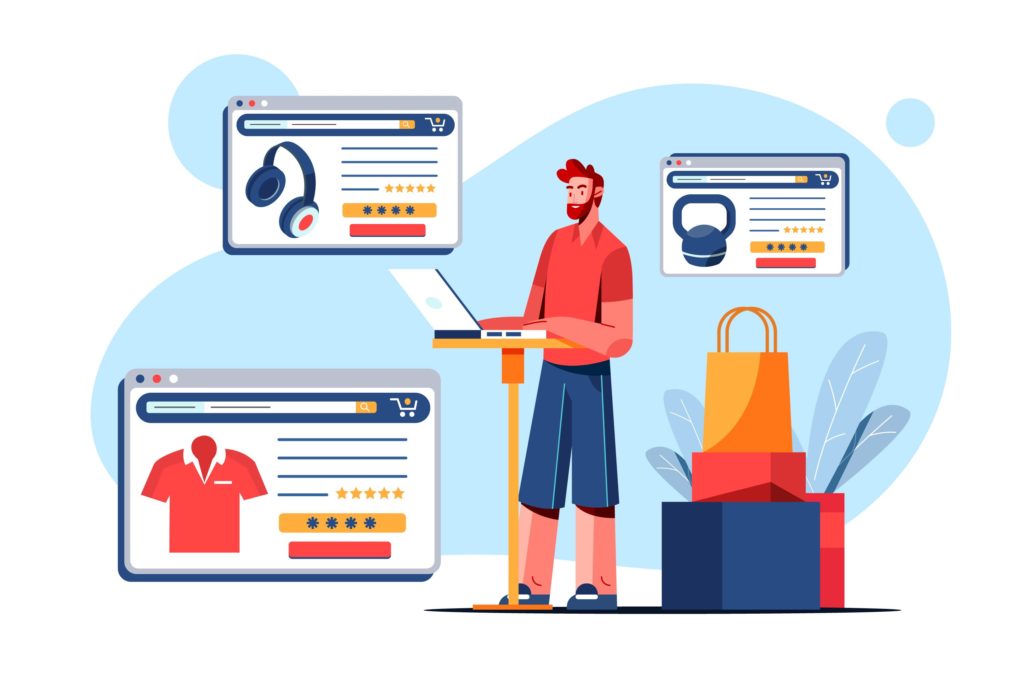
Personalization means personalizing your visitor’s user experience on your website. Even if you are new to the term, it’s pretty much obvious you have already come around or experienced personalization online.
How?
Did this ever happen to you when you were looking for a service or product and you had a chat with someone or searched for the product on Google and suddenly wherever you go you see related posts or ads?
For example, you are searching for ‘red sneakers’ and you Googled it once. Now, wherever you go, Facebook, Google, Instagram, or any other website, red sneaker ads or posts are popping up in your feed.
This is personalization. Your online behavior is monitored so that websites and search engines can provide you with the information and advertisements that are most relevant to you and your interests based on factors such as your location, the type of device you use, and the content you have previously viewed.
For online retailers, personalization means anticipating a customer’s preferences in order to present them with products that are more likely to result in a sale. Personalization can boost growth for your WooCommerce store by up to 40%, and 72% of your customers already expect it.
Therefore, personalization is an important aspect of WooCommerce conversion rate optimization (CRO). It involves tailoring the user experience to the individual preferences and behavior of each website visitor.
Personalization can help improve the effectiveness of your website in generating revenue by creating a more engaging and relevant user experience that increases the likelihood of visitors completing a desired action.
So how do you apply personalization?
Here are some ways that personalization can be used for WooCommerce conversion rate optimization.
Product recommendation
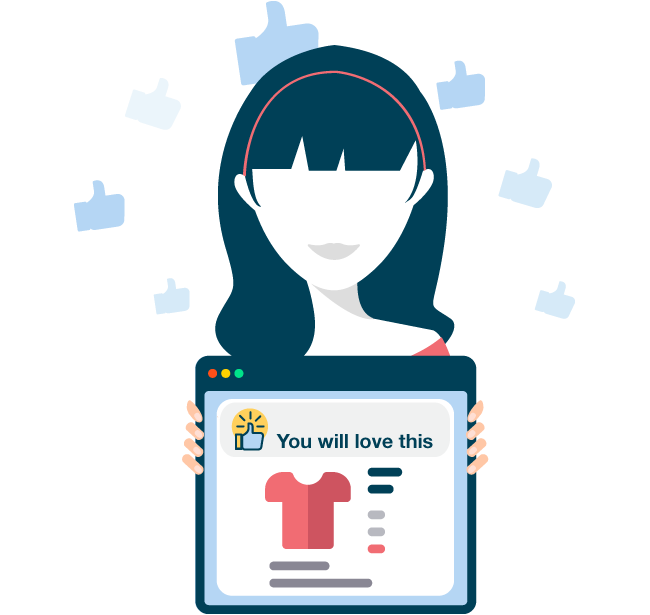
Related products
These are products that are related to the one the visitor is currently viewing. For example, if a visitor is looking at a shirt, you could recommend other shirts that are similar in style or color.
Frequently bought together
These are products that are often purchased together with the one the visitor is currently viewing. For example, if a visitor is looking at a camera, you could recommend a tripod or camera case that is frequently bought together with that camera.
Recently viewed products
These are products that the visitor has recently viewed on your website. By reminding visitors of products they were interested in, you can increase the likelihood of them making a purchase.
To ensure that your personalized product recommendations are effective, it’s important to use them strategically and test their effectiveness through A/B testing and other methods. You should also make sure that the recommendations are visually appealing and easy to navigate, as this will encourage visitors to engage with them.
Therefore, by using personalized product recommendations effectively, you can improve the user experience and increase WooCommerce conversion rates.
Upsell, cross-sell and down-sell
One tried-and-true technique for increasing eCommerce sales through personalization is to offer targeted upsells, cross-sells, and down sells. While all three strategies aim to increase your customers’ AOV, they take slightly different approaches.
Upselling
Upselling involves offering your customers an upgraded or more expensive version of the product they are already considering. To personalize this approach, you can suggest products based on the customer’s purchase history or browsing behavior.
For example, if a customer has previously purchased a camera from your store, you can suggest an upgraded version with better features or accessories.
Cross-selling

Cross-selling involves suggesting complementary products to the one a customer is currently considering. To personalize this approach, you can suggest products based on the customer’s purchase history or browsing behavior.
For example, if a customer is looking at a camera, you can suggest a memory card, camera bag, or other accessories that would enhance their experience.
Down-selling
Down-selling involves offering a cheaper or lower-tiered product when a customer shows hesitation about a more expensive one. To personalize this approach, you can suggest products based on the customer’s budget or purchase history.
For example, if a customer abandons their cart because the product is too expensive, you can offer a less expensive version of the same product or suggest a product with similar features but at a lower price point.
Upselling, cross-selling, and down-selling are effective strategies for improving conversion rates in your WooCommerce store. By personalizing these approaches based on customer behavior and preferences, you can increase the chances of making a sale and improve the overall customer experience.
Use personalized messaging
One of the most effective ways to personalize your WooCommerce store is by tailoring your messaging to each customer’s interests and preferences. This can be achieved by using personalized subject lines and email content that reflect the customer’s recent purchases or browsing behavior.
By making your messaging feel more personal and relevant, you can increase the likelihood of the customer taking action and making a purchase.
To implement personalized messaging, you can use tools like email marketing software that allows you to segment your audience and send targeted messages. You can also use website personalization software to display personalized messaging based on a customer’s browsing behavior.
Personalized messaging can be used in various parts of your WooCommerce store, such as abandoned cart recovery emails, product recommendation emails, and even on your website’s homepage. By using personalized messaging throughout the customer journey, you can build trust and increase engagement, leading to higher conversion rates.
Offer personalized promotions
Offering personalized promotions is another effective way to personalize your WooCommerce store and improve conversion rates. By using customer data, you can offer promotions and discounts that are tailored to each customer’s interests and preferences.
For example, if a customer has shown interest in a particular product category, you can offer them a discount on related products.
To implement personalized promotions, you can use email marketing software to send targeted promotions to specific segments of your audience. You can also use website personalization software to display personalized promotions and discounts based on a customer’s browsing behavior.
Personalized promotions can be used in various parts of your WooCommerce store, such as on the homepage, product pages, and checkout pages. By offering personalized promotions, you can increase the likelihood of the customer making a purchase and ultimately drive more sales.
Personalized geo-location targeting
Geolocation-based redirection improves the user experience by sending visitors directly to the relevant pages. Targeting customers based on their location allows you to send them more personalized offers.
Product feed marketing
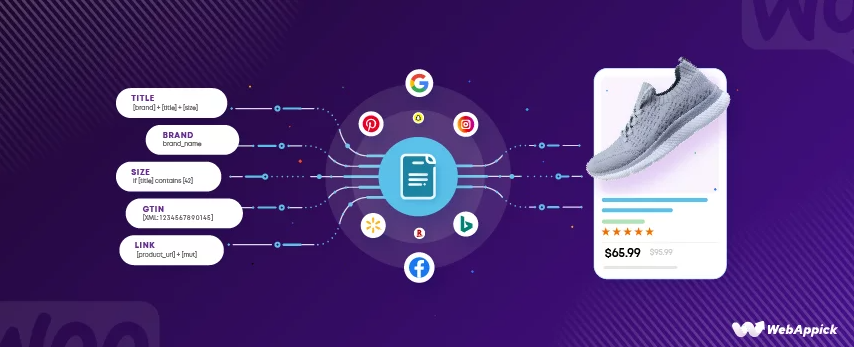
A key player in your quest for optimizing your WooCommerce store for conversion is product feed marketing. Products feed marketing refers to the process of listing and promoting your WooCommerce products on multiple platforms through product feeds.
In the later part of the article, we will discuss in detail what a product feed is and how it can increase your conversions significantly.

Use email marketing

According to studies, 4.24 percent of people who interact with an email marketing ad ultimately make a purchase. That’s more than seven times the rate of conversion from social media users and almost double the rate of search engine traffic.
Email marketing is an essential part of any WooCommerce conversion rate optimization strategy. It allows you to engage with your customers and promote your products through targeted and personalized communication.
By segmenting your email list based on customer behavior and interests, you can provide relevant and valuable content that encourages them to take action. One way to use email marketing to improve conversion rates is to send abandoned cart recovery emails.
When a customer abandons their cart, you can send them an email reminding them of the items they left behind and offering an incentive. For example, you can offer discounts or free shipping, to encourage them to complete their purchase.
Another way to use email marketing is to send targeted promotions and offers to your customers. By using customer data, such as their purchase history and browsing behavior, you can send personalized offers that are more likely to be relevant and valuable to them.
For example, if a customer has recently purchased a pair of shoes, you can send them an email with a promotion for a complementary product, such as shoe polish or a shoe cleaning kit.
Email marketing can also be used to provide valuable content to your customers. This can include tips and advice related to your products or industry. Or educational content that helps customers make informed purchasing decisions or updates on new products and releases.
By providing valuable content, you can build trust and authority with your customers and encourage them to return to your store.
Offer discounts and promotions
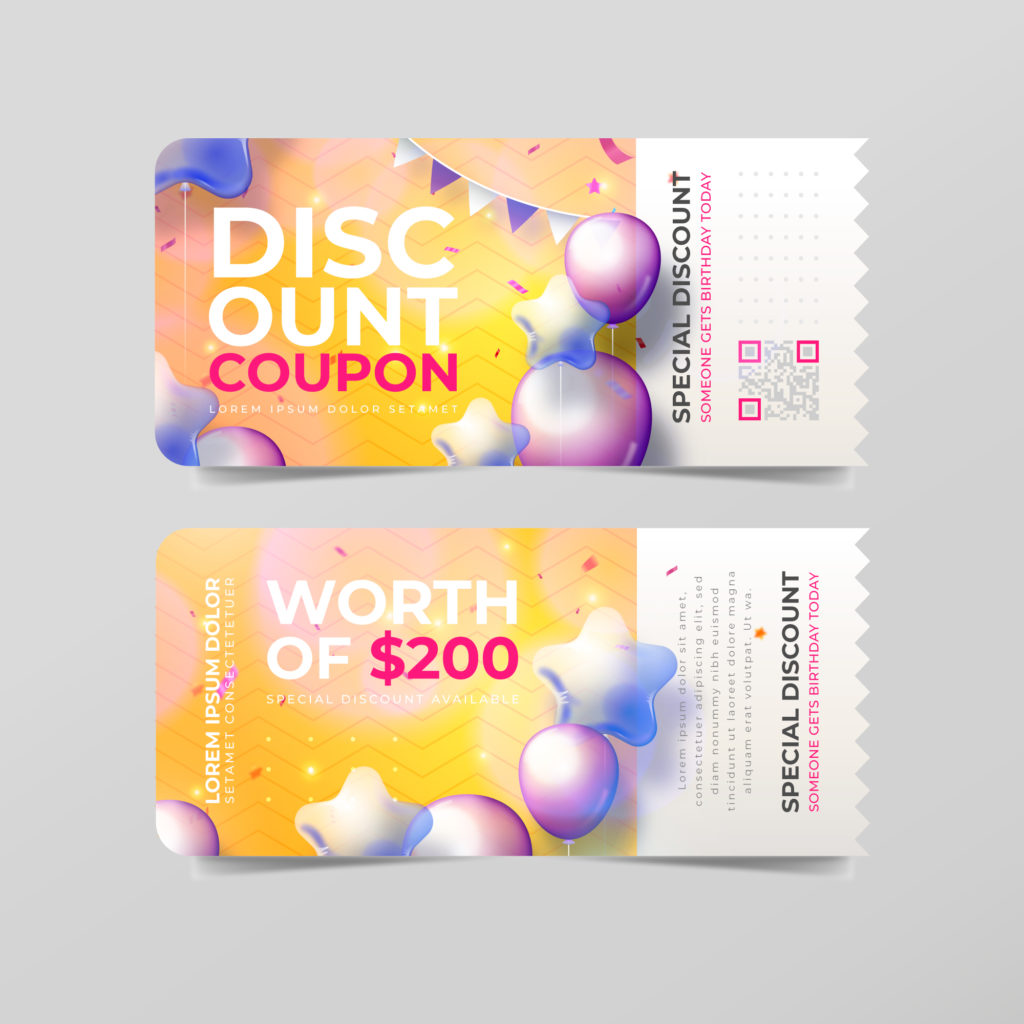
Offering discounts and promotions are an effective way to attract new customers and encourage existing ones to make a purchase. By providing incentives for customers to buy, you can increase the likelihood of them converting and boost your WooCommerce conversion rate.
One way to offer discounts and promotions is to provide them to first-time customers. For example, you can offer a discount code for new customers who sign up for your email list or create an account on your website.
This can help incentivize them to make their first purchase and introduce them to your products.
Another way to offer discounts and promotions is to provide them during special events or holidays. For example, you can offer a promotion or discount code for Valentine’s Day or Black Friday. This can help create a sense of urgency and encourage customers to take advantage of the deal before it expires.
In addition to offering discounts and promotions, you can also use upselling and cross-selling tactics to increase the value of each purchase.
For example, you can offer customers a discount on a complementary product when they purchase a certain item. This can help increase the overall value of their purchase and encourage them to make additional purchases.
It’s important to ensure that your discounts and promotions are clear and easy to understand. Make sure to communicate any terms and conditions, such as minimum purchase requirements or expiration dates, upfront to avoid any confusion or frustration from customers.
Improve website speed

47% of people expect web pages to load in less than 2s; 57% leave if >3s, 80% never return, and 44% tell friends about the negative experience.
Website speed is a crucial factor in improving conversion rates for any WooCommerce store. Customers expect fast loading times, and a slow website can lead to frustration and abandonment of the site.
To improve website speed, you can optimize images, minify code, enable caching, and use a content delivery network (CDN). It’s also essential to choose a reliable hosting provider and regularly monitor your website’s performance.
Optimize product pages
Product pages are critical for WooCommerce conversion rate optimization. To optimize your product pages, you should focus on product descriptions, images, and pricing.
Make sure to include high-quality images that showcase your products from multiple angles. Also, provide detailed product descriptions, and make pricing and shipping information clear.
Simplify the checkout process
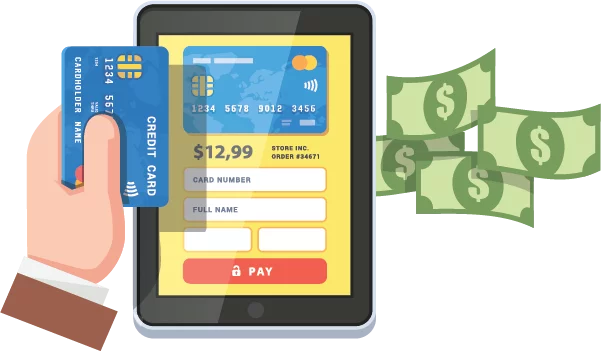
A complicated checkout process can lead to cart abandonment. To simplify the checkout process, you should remove unnecessary steps, reduce the number of form fields, and provide a progress indicator to show customers how far along they are in the checkout process.
You can also offer guest checkout and provide multiple payment options to make the process more convenient.
Use customer reviews

Customer reviews can help build trust and credibility for your WooCommerce store. Make sure to display reviews prominently on your product pages and encourage customers to leave reviews by sending follow-up emails after a purchase.
Implement abandoned cart recovery
Abandoned cart recovery is a powerful tool for WooCommerce conversion rate optimization. By sending targeted emails to customers who abandon their carts, you can encourage them to return and complete their purchases.
Optimize for mobile

Mobile optimization is essential for any WooCommerce store. Make sure your website is mobile-friendly, loads quickly on mobile devices, and has a responsive design that adjusts to different screen sizes.
Provide clear and concise product information
Providing clear and concise product information is critical for WooCommerce conversion rate optimization. Make sure to include essential details such as product specifications, dimensions, materials, and care instructions.
Display shipping costs upfront
Displaying shipping costs upfront can help prevent cart abandonment and improve conversion rates. Make sure to provide accurate shipping estimates based on the customer’s location and the weight and size of the product.
Use high-quality product images

High-quality product images can help showcase your products and increase sales. Make sure to include multiple images that show the product from different angles and provide zoom functionality for customers to see details.
Include a search function on your website
Including a search function on your website can help customers quickly find the products they’re looking for. Make sure to optimize your search function with autocomplete suggestions and relevant search results.
Use clear and prominent calls to action (CTAs)
Clear and prominent CTAs can help guide customers toward making a purchase. Make sure to use language that is action-oriented and visually distinguishable from other page elements.
Optimize your website for search engines (SEO)
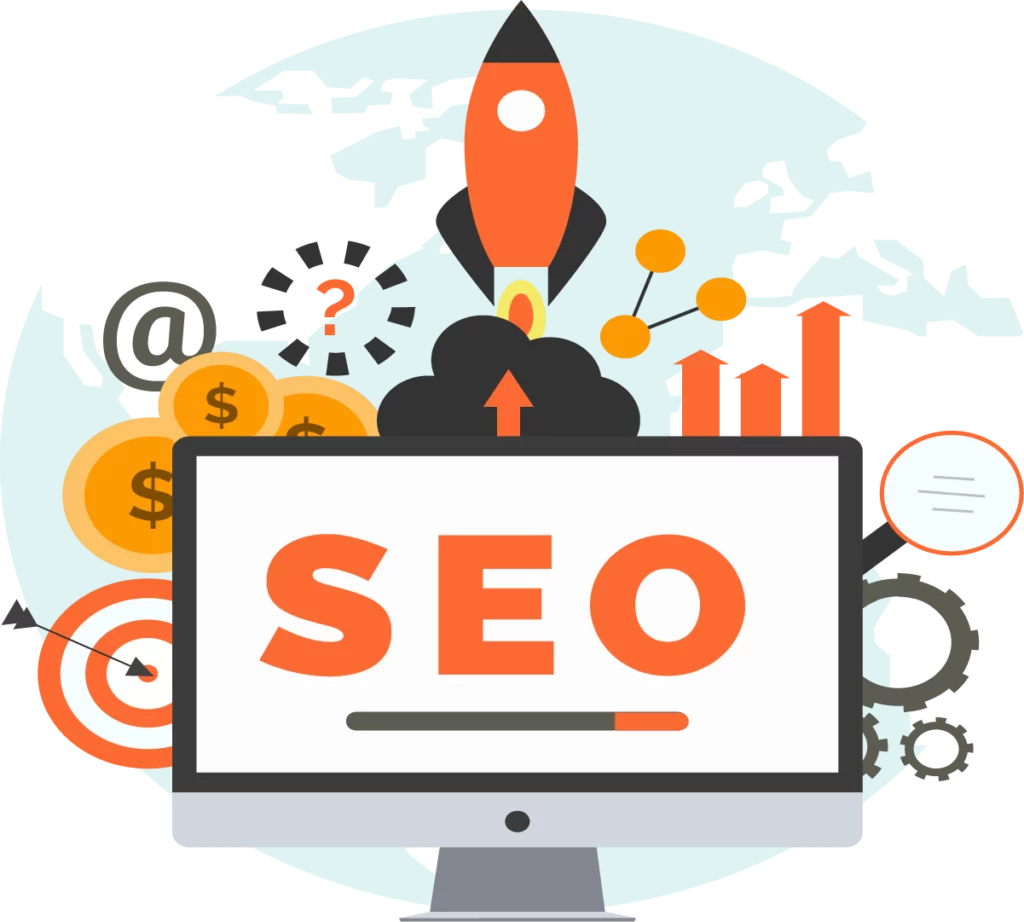
SEO is critical for improving the visibility of your WooCommerce store and driving traffic to your website. Make sure to optimize your website with relevant keywords, meta tags, and other on-page SEO techniques.
Use social proof (e.g., customer testimonials, trust badges)
Social proof can help build trust and credibility for your WooCommerce store. Make sure to display customer testimonials, trust badges, and other forms of social proof prominently on your website.
Make your website visually appealing and easy to navigate
A visually appealing and easy-to-navigate website can help improve conversion rates. Make sure to use a clean and modern design, clear typography, and intuitive navigation.
Use retargeting ads

Retargeting ads are a powerful tool for WooCommerce conversion rate optimization. By targeting customers who have previously visited your website, you can remind them of your products and encourage them to return and make a purchase.
Retargeting ads can be used on social media platforms, search engines, and other advertising networks.
Provide excellent customer service
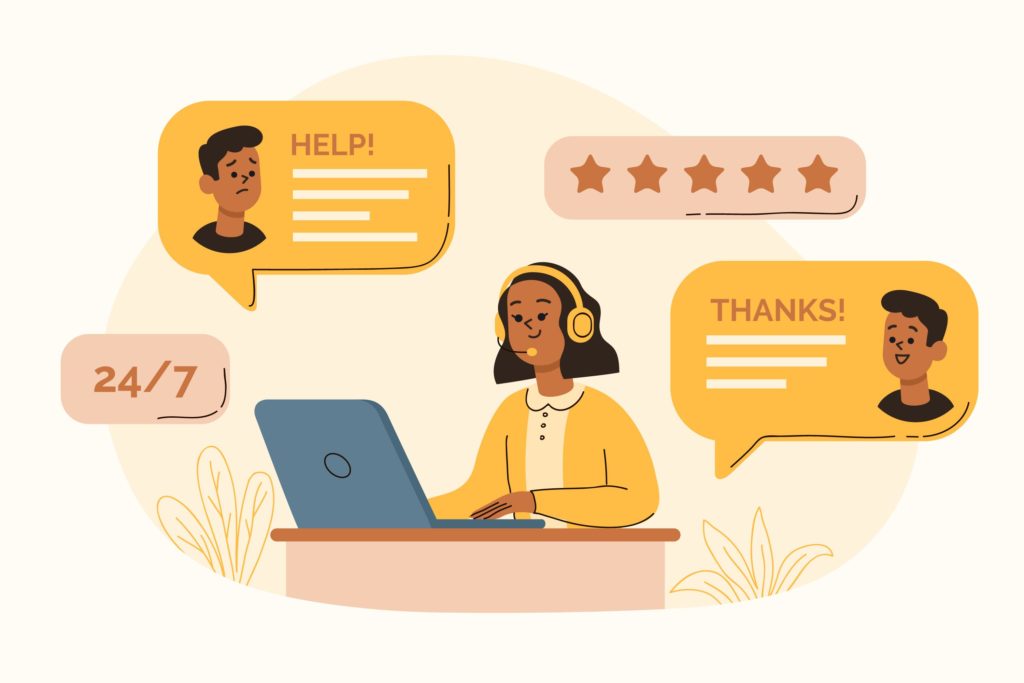
Excellent customer service is crucial for building customer loyalty and improving conversion rates. Make sure to respond promptly to customer inquiries and provide support via multiple channels, such as email, phone, and live chat.
Offer a guest checkout option
Offering a guest checkout option can help simplify the checkout process and reduce cart abandonment. Make sure to collect the minimum amount of information required and provide a clear explanation of why certain information is necessary.
Personalize the shopping experience for returning customers
Personalizing the shopping experience for returning customers can help improve customer loyalty and increase sales. You can use customer data to recommend products based on their purchase history, provide personalized offers and promotions, and send targeted emails based on their interests.
Integrate with social media platforms
Integrating your WooCommerce store with social media platforms can help drive traffic and improve conversion rates. Make sure to share your products on social media, provide social login options for membership stores, and encourage customers to leave reviews and share their purchases.
Provide multiple payment options
Providing multiple payment options can help improve the checkout experience and reduce cart abandonment. Make sure to offer payment options that are popular and convenient for your target audiences, such as credit cards, PayPal, and mobile payment systems.
Product feed plugin for WooCommerce conversion rate optimization
Coming back to the product feed marketing we discussed earlier.
There are thousands of marketplaces online where you can list and promote your products and even sell them on those platforms. For example, we all are aware of the marketplace giants such as Amazon, eBay, Etsy, Walmart, etc.
Along with that, there are massive price comparison engines such as Google Shopping, PriceGrabber, Idealo, etc. These price comparison engines open up a huge opportunity for you to not only promote your products but also understand your competition and come up with better pricing.
In addition to the above channels, there are also social media platforms that play a vital role in today’s marketing. You can list and promote or run paid ads on these platforms as well. We are sure, you have seen plenty of companies promoting their products on Facebook, Instagram, Snapchat, etc.
In the United States, 92% of consumers shops from online marketplaces. In the year 2020, the top 100 online marketplaces accounted for 62.7% of all sales made via the internet.
When you list your products on these channels, you put yourself in direct competition with other businesses and have the potential to sell to millions of additional customers.
However, creating and listing products manually, one at a time, and then uploading them to the appropriate channels will be a major hassle and will take a significant amount of time. And this is where the use of a product feed can be of tremendous assistance to you.

What is a product feed?
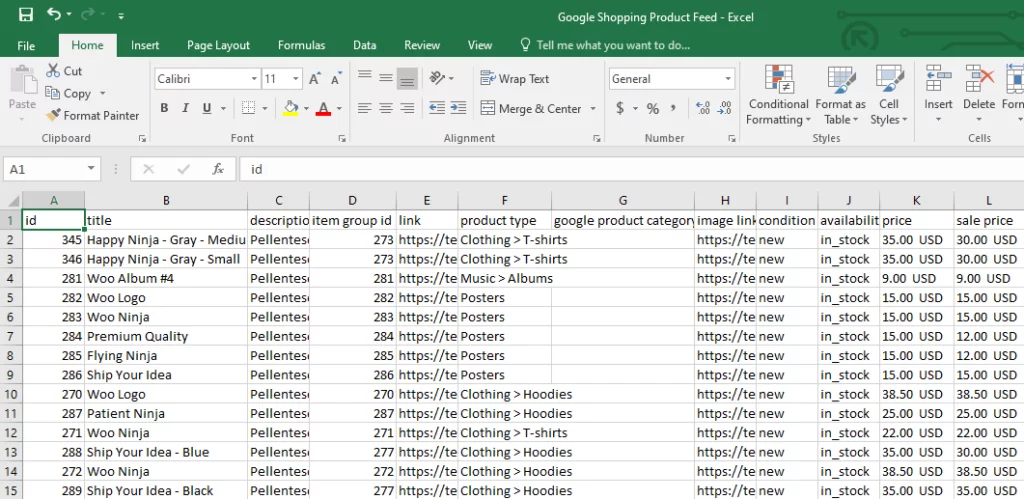
A product feed is like a catalog that contains all your WooCommerce product details. This is a file that contains a list of your store’s products and their attributes, such as title, description, price, image, and availability.
It’s used to share this information with third-party platforms, such as shopping comparison websites, marketplaces, and social media channels.
Product feeds are typically created in a structured format, such as CSV or XML, and can be updated regularly to ensure that the information is accurate and up-to-date. The feed can then be submitted to various platforms, allowing customers to discover and purchase your products on different channels.
By using a product feed, you can increase the visibility of your products and reach a wider audience. Customers are more likely to discover your products when they appear on multiple platforms and channels, making it easier for them to find and purchase what they’re looking for.
In addition, product feeds can help improve your WooCommerce conversion rate optimization by providing more opportunities for customers to engage with your products. When customers see your products on different channels, they’re more likely to visit your store and make a purchase, especially if they’ve seen positive reviews or recommendations.
Users in price comparison engines and marketplaces are not just random visitors. They are specifically looking to buy the products you are selling. When you list your WooCommerce products in these channels, you create a greater chance to drive potential buyers to your store that can end up making a purchase.
Overall, a product feed is a powerful tool for improving your WooCommerce conversion rate optimization and expanding your reach.
CTX Feed – WooCommerce product feed plugin
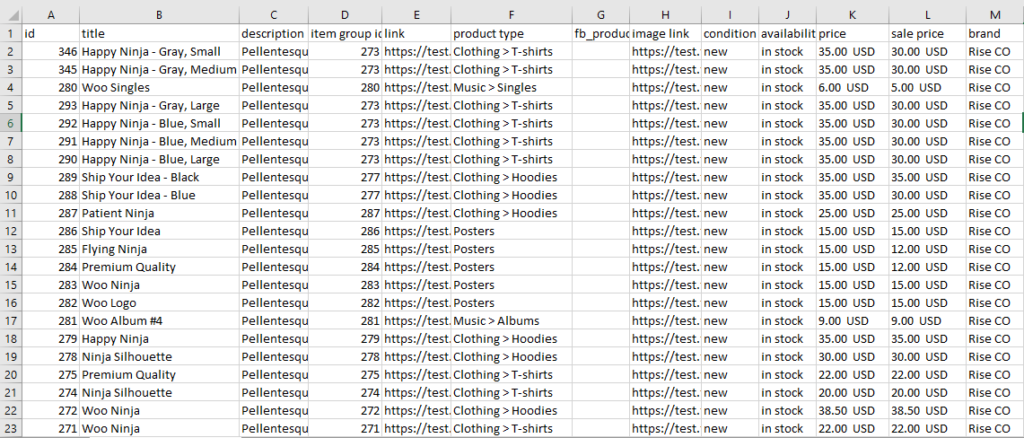
As you can see in the above image, product data are organized under different product characteristics called attributes. Different channels require different attributes to list your products on their platform.
Knowing and understanding all the necessary attributes from different channels and creating the product feed files for them can be a daunting task. Especially when you have a large store with 100+ products, creating and updating a product feed file can be a nightmare.
This is where the CTX Feed plugin can come in mighty handy. This advanced plugin can create product feed files for 120+ channels with little to no effort.
CTX Feed already knows which channel needs what attributes. All you have to do is select the template and it will automatically populate the necessary attributes for you.
Not only that, but it will also automatically collect all your WooCommerce product data and organize it in the file type you choose. In addition to that, the plugin also supports automatic updates.
For any changes you make to your WooCommerce product pages, CTX Feed will automatically fetch those changes and update all your data feed files. Thus, you can display the same accurate information across all your channels.

How does CTX Feed help to increase WooCommerce store conversion rate
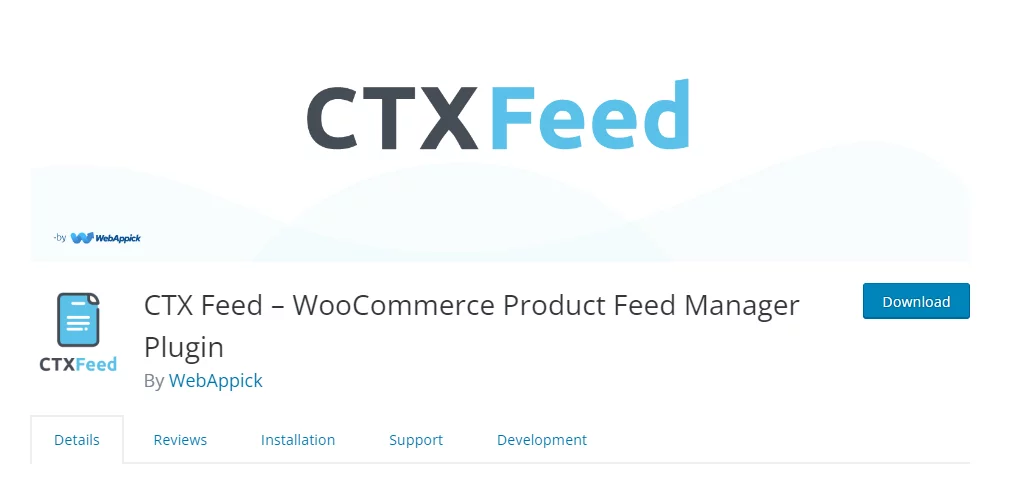
A CTX Feed – WooCommerce Product Feed Plugin can be a powerful tool for increasing your WooCommerce store’s conversion rate in several ways:
Increased visibility
By creating a product feed, you can distribute your product information to a wider audience, making it easier for potential customers to discover and purchase your products. By appearing on multiple channels and platforms, you can increase the visibility of your products and reach new audiences.
Targeted advertising
With a product feed plugin, you can create targeted advertising campaigns based on specific product attributes, such as price, category, or availability. This allows you to reach customers who are more likely to be interested in your products, improving the effectiveness of your advertising campaigns and ultimately increasing conversion rates.
Improved user experience
Product feeds can help improve the user experience by providing accurate and up-to-date product information across multiple channels. When customers see your products on different platforms, they’re more likely to trust your store and make a purchase.
This can improve your WooCommerce conversion rate optimization by increasing the likelihood of customers making a purchase.
Simplified product management
CTX Feed can help simplify product management by automatically updating product information across different platforms. This saves time and effort, allowing you to focus on other aspects of your business, such as customer service and marketing.
Competitive advantage
By creating a product feed, you can gain a competitive advantage by reaching new customers and increasing the visibility of your products. This can help you stand out from competitors and ultimately increase your WooCommerce store’s conversion rate.

Frequently Asked Questions (FAQs)
WooCommerce makes it easy to track conversions through several methods:
• Enable built-in conversion tracking settings in WooCommerce
• Use Google Analytics
• Use third-party plugins
• Set up goals in Google Analytics
In a survey conducted by Littledata in 2022, the average WooCommerce conversion rate was found to be 0.3 percent.
Wrap up
Improving your site’s conversion rate is an ongoing process, not a quick fix you can then sit back and enjoy. Allocating time to work on some of the aforementioned enhancements and optimizations is a wise decision that will pay off in the long and short terms.
Hope this article on WooCommerce conversion rate optimization was of help to you. Let us know in the comments if you have any questions or suggestions.
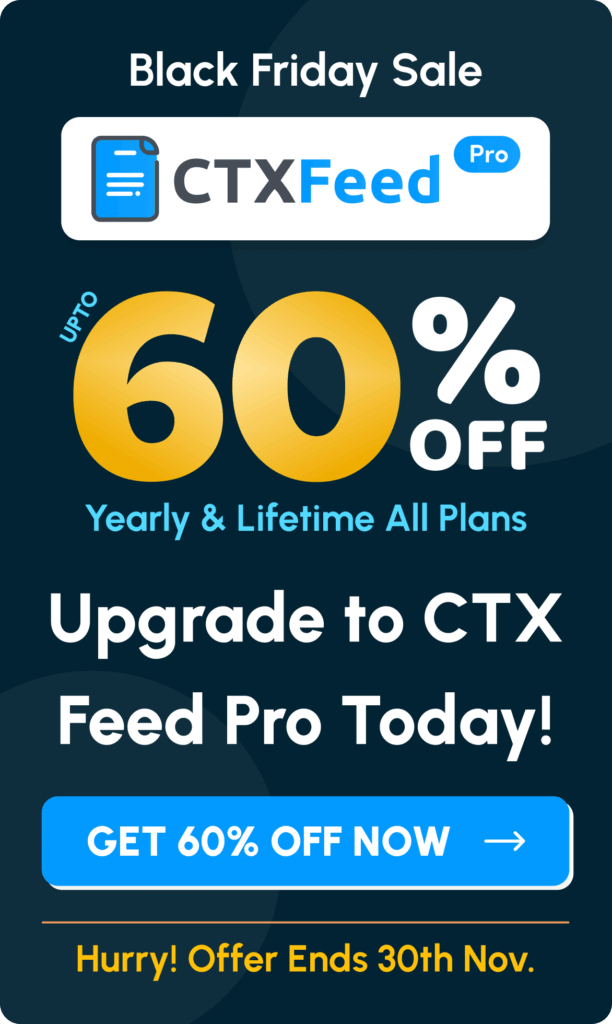
Thank you for sharing such an important topic with us.
Glad to know that it helped!